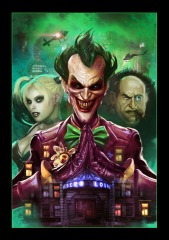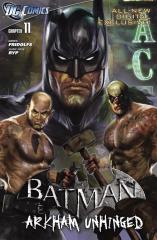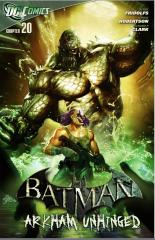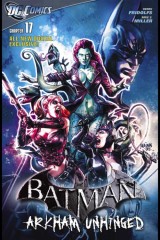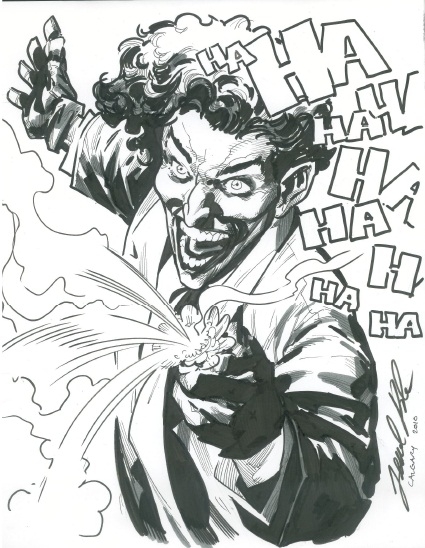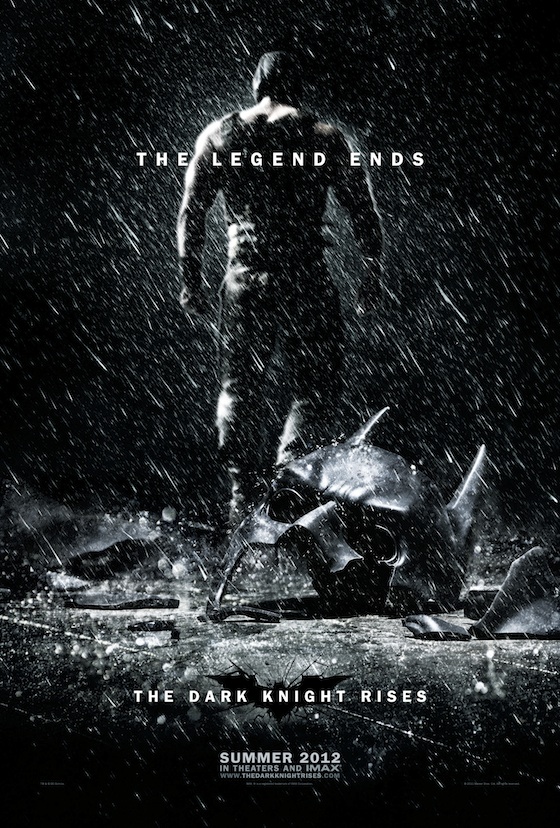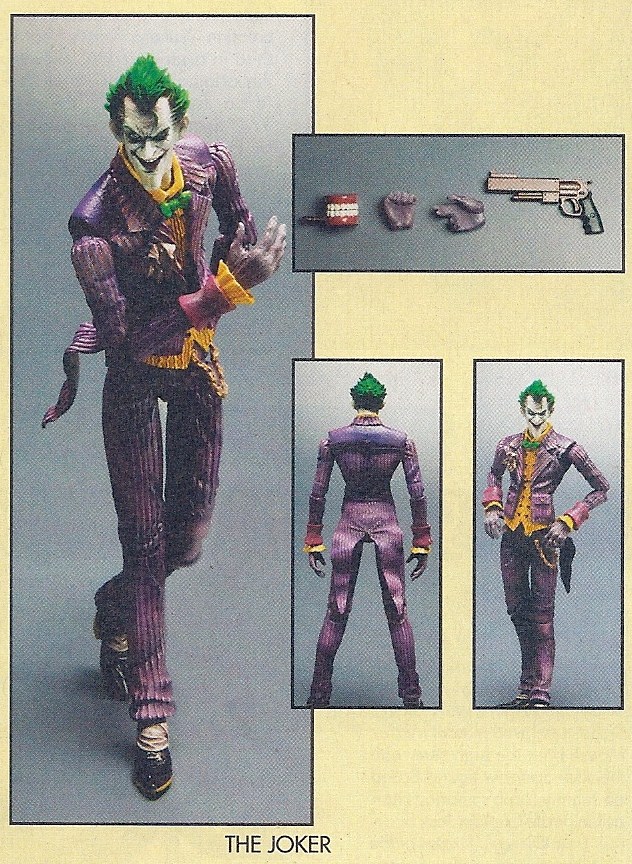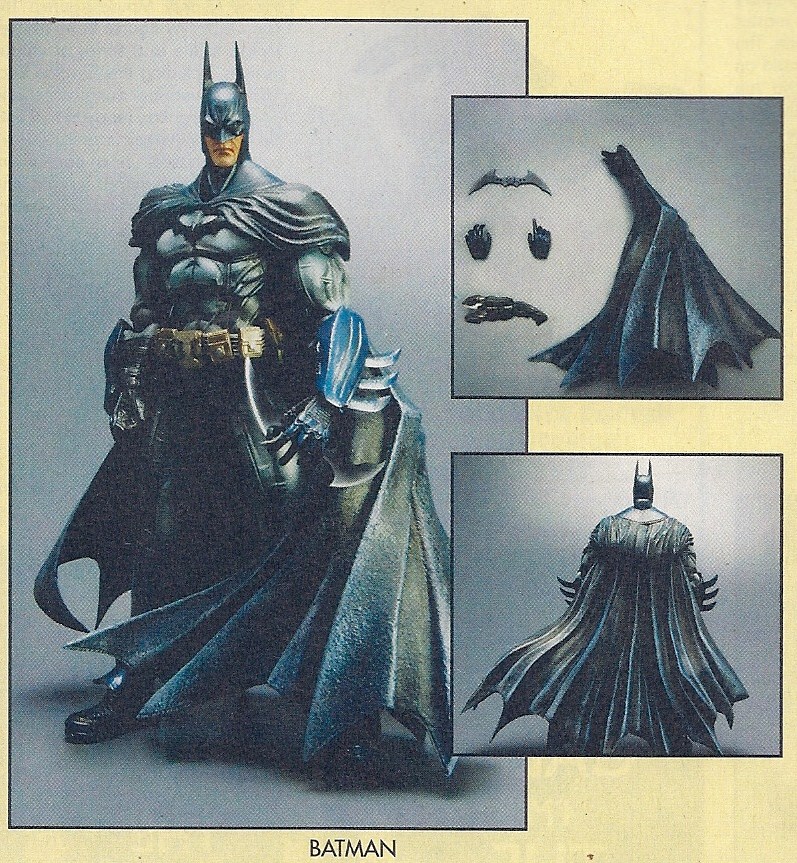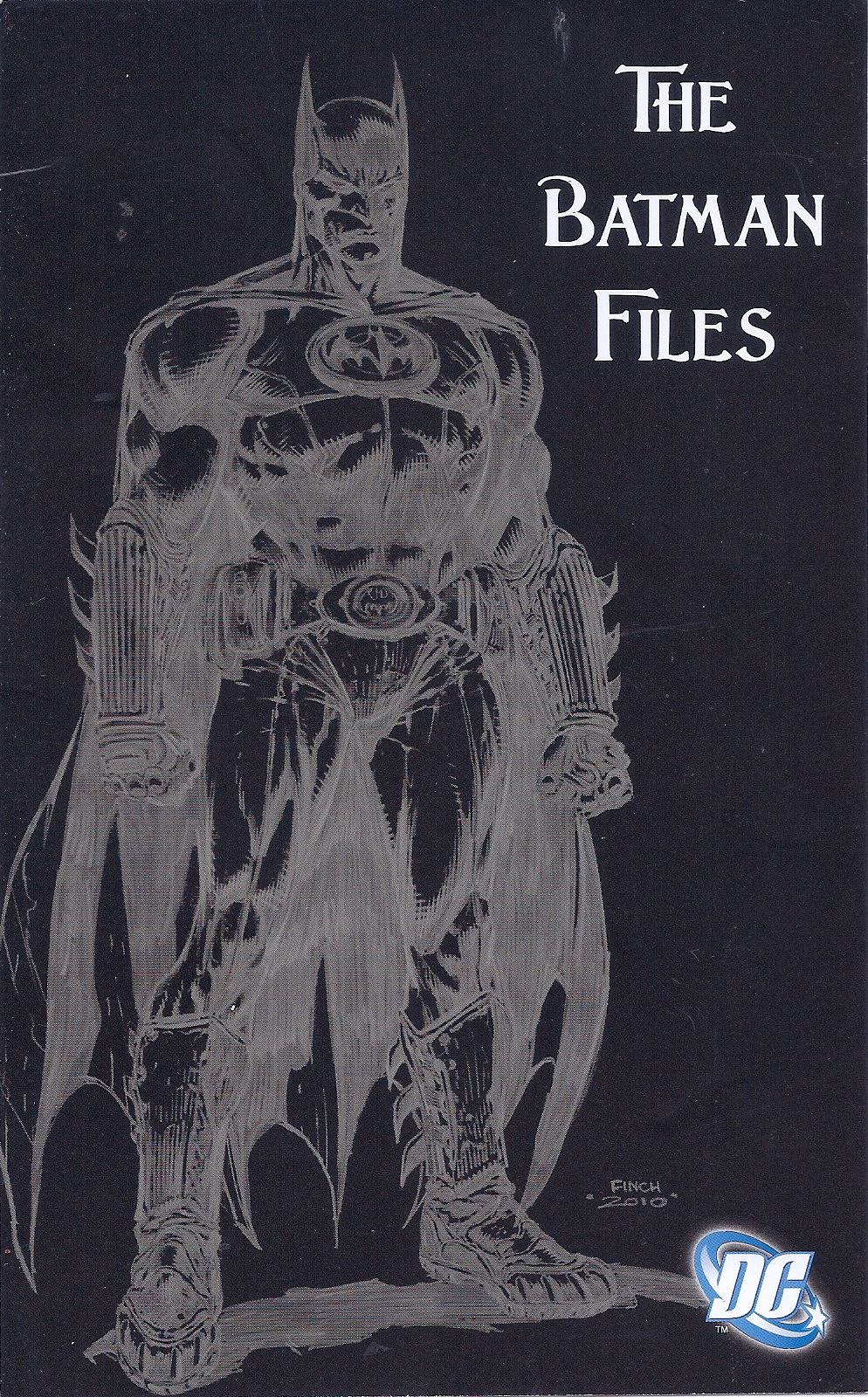OK, Jokerholics. I know that this is a Jokercentric site, but cannot deny the fact that for a while Harley Quinn was involved with the Joker, hence the need to include a little bit of her. It is good to see that the ‘new Harley’ is Joker-less, something I think she had coming for too long. As a character I always thought she had the potential to be much more than what many writers had made her….a joker sidekick…a joker lover….a flat and spineless mirror of Joker’s madness. Characters, like people need to evolve. It’s the law of nature. Where would Harry Potter be if we left him in his first year of school at Hogwartz? All characters grow and develop, its part of what makes a character realy transcend the page and become memorable. The question that arises though is…is this new ‘origin story’ really going to give Harley the credit she deserves as a character? We all know how closely tied her origin is to the Joker’s life. Actually you cannot have a Harley without Joker, but can she go from that start point, grow, and become her own character?
I really don’t know, but I really want to find out. Glass promises to give her the space she needs to grow but I will wait to read the issue in question. Many have tried to do the same only to return to the same old formula that made her famous in BTAS….and THAT was over 20 years ago. I think it is time for Harley to be just…Harley.
After rambling about with my opinion, I will now let you into a transcript of the interview done by CBR to ADAM GLASS about her origin.
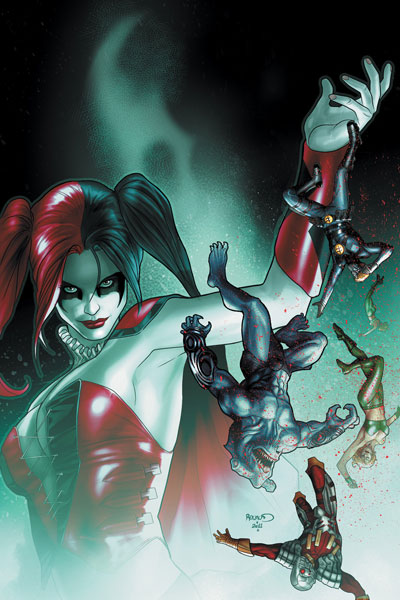
Cover to SUICIDE SQUAD #6 (courtesy of DC COMICS.com)
In January, “Suicide Squad” writer Adam Glass, series artist Federico Dallocchio and DC Comics are sending Deadshot, King Shark and the other Team X members after one of their own: Harley Quinn.
In “The Hunt For Harley Quinn,” Mr. J’s main squeeze is going rogue, breaking out of Belle Reeve during a prison riot in order to look for the missing Joker. Unfortunately for her, the Squad is hot on her tail, though as Glass informed CBR, that’s not all the writer has in store for Quinn as issue #7 will also feature the popular bad girl’s new origin story.
Originally created by Paul Dini and Bruce Timm for their early ’90s television show “Batman: The Animated Series,” Quinn made her way into comics shortly thereafter as Dini and Timm established her DC Universe origin the 1994 “Mad Love” one-shot. As the book revealed, Quinn was once Dr. Harleen Quinzel, Joker’s psychiatrist in Arkham Asylum. Falling in love with Joker during their therapy sessions, Quinn changed her name and donned her harlequin-inspired costume, obsessively turning to a life of crime in order to win Joker’s affection. Winning an Eisner Award for Best Single Story, “Mad Love” remained Quinn’s comic book and television origin — until now.
Speaking with CBR about the new origin, Glass took us on a tour of his “Suicide Squad,” touching on the tough times ahead for Deadshot, Savant’s not-so-permanent death and the re-design controversy the book has dealt with since its September launch.
CBR News: This month wraps up your initial “Suicide Squad” storyline, and in January we’ve got “The Hunt For Harley Quinn” starting up. We’ve already seen that you’re committed to character rotation with the first death in the Squad and Captain Boomerang coming on, but do you see Harley as one of the few mainstays of your comic?
Adam Glass: Absolutely! First of all, from the moment we started talking about this idea, I think we were on a call and someone said, “The Hunt for Harley,” and I said, “I love that title!” It just sounds so freaking awesome! So yes, Harley is definitely one of the stars of our book, from the moment I pitched her as one of the members of the Squad. I think everybody at first was like, “Huh?” One of the things we’re doing that I really enjoyed with Harley is just showing all the different sides to her. I think she’s a great character and I think she’s been portrayed in an interesting way; we’re justreally peeling the onion back and showing that there is even more to her then we’ve seen so far.
What first interested you in exploring Harley as a character? As you said, you were really the one who wanted to bring her onto “Suicide Squad.”
I think there’re a couple of things about Harley. One is, I think she’s incredibly underestimated. I think people look at her as a sidekick — and when I say people, I’m talking within the world of the comic itself, other heroes, villains — stuff like that. I mean, her fan base is so strong, and all those Harley Quinn fans who constantly want to kill me for her costume change and everything else, I love them to death and I think they’re going to be really happy as we continue to peel back all these different layers of her.
She’s an extremely dangerous young woman, and I think what this book is going to show is just how dangerous she is, and also how smart she is. Let’s not forget, this is a woman who was a doctor, a psychiatrist, who was very successful at her life before she even met Joker. I have to believe that someone like this, who is so smart, is more culpable in her switchover from Dr. Harleen Quinzel to Harley Quinn. There’s more to this. She knows what she’s doing, she’s more in charge than people think. I think a lot of people say, “She’s just in love with Joker and does what he says.” She definitely falls in love with Joker and she definitely does what he says, but she knows what she’s doing. There’s something behind the madness.
What can you tell us about the “Hunt” storyline?
I think I can tell you this, which is, we already know that the Joker’s missing. When she hears that, well, Harley needs to go find him. Someone took her puddin’, where’s Mr. J? She turns around and decides, you know what? I’m going to go find out for myself what happened. As I think about it I’m like, hmm, can I say this? Lawyer, lawyer! [Laughs] I can say we’re going to hunt her, so you know that she’s basically going to get away.
In issue #7, you’re re-jiggering the origin story for Harley. Is that all part and parcel with you wanting to show her as more than Mr. J’s sidekick?
Once again it goes with what I’ve been saying about the whole New 52 and especially “Suicide Squad,” which is; it’s familiar but fresh. What’s the familiar thing that we all know about her, and what’s the fresh take on it? I think, when you look at Harley, she’s still [Joker’s] doctor, he’s still her patient, they still meet at Arkham Asylum — it’s really the inciting incident that changes. We’re diving a little deeper into the actual psychology of what it is. What makes her turn, what makes her fall for him, what makes her decide to go down his road? There’re all these things we’re going to visit and examine for the reboot of her origin. How’d she get her white skin? She’s not albino, but she’s close to [the Joker] with chalk white skin. All those things, we will establish.
It seemed like Harley was exploring a “relationship” with Deadshot — is this new twist going to play into the “Hunt?”
Let’s just put it this way — it’s definitely going to get dealt with! [Laughs]
The Suicide Squad members are all hardened criminals, but who’s the scariest bad guy in your book full of criminal badasses?
I think that’s part of what we’re going to do in this book. We’re going to find that the girl who has no powers and is apparently the most underestimated is actually the most dangerous person in the group. By the end of this book, people are going to be like, “Wow, you don’t want to screw with Harley Quinn.” And Deadshot is also obviously a real badass. I think everything is going to come to a culmination here, everything from the relationship we basically started laying down to who’s in charge of the Squad, who’s in the Squad; it’s all going to peak by the end of #7.
I wanted to also say there are going to be a couple of issues coming up, too, that are going to lead to some things. To take a moment to talk about the other characters; we’re going to get into why King Shark has been evolving, we’re going to find out what’s been happening to him, so we’re going to start to explore King Shark and why he’s been so out of it. And everyone thought Savant died in book one. Well, we’re going to find out what happened to Savant, because he appears in “The Hunt For Harley.” We’re going to find out more about El Diablo, his powers and what the tattoos mean and all that stuff. And Black Spider — what’s his background? What’s he doing there, what happened to him after the diner where he got shot, is he going to be back in the front or is he going to die? We learn more about Yo-Yo, who is an interesting character — who is he, what is he, where does he come from? And there are these great covers; on the “Hunt For Harley” I think Paul Renauld, a French artist, did the first cover. The cover’s just amazing. And then Ivan Reis, who’s killing it on “Aquaman,” is the second cover.
With all these different characters replacing Squad members, how do you go about deciding who you are going to bring in? Is it something where you consider the team dynamic or are there other considerations?
I think there’s a mixture of considerations, and that’s one of them. You ask, how does this person affect the rest of the team? Someone like Captain Boomerang comes in, and he’s in charge, basically given the detonator to the neck bombs. Holy cow! Obviously, from the moment he sees Deadshot– they know each other from the past and they don’t like each other. I always say it’s the male alpha monkey problem — stick a bunch of male alpha monkeys in the room and let them kill each other. So yes, that definitely comes into consideration when you’re picking everybody, and it’s also just a wink to the old fans who love Boomer like I do and want to see him. I think you’ll see some other visits, as the issues go on, of other people coming in and how they play into this new Squad. It’s exciting! I’m glad to have Captain Boomerang back on board.
And you’ve also got Yo-Yo, who you mentioned earlier and who seems to be a completely new character.
Yo-Yo is a completely new character. Part of the great opportunity I’m getting with the book, and I know a lot of times, as an avid reader, myself, of comics, and as an old fan of Ostrander’s “Squad,” you always knew who the dude with the red shirt was, and you were like, “I’ve never heard of that guy, that guy’s dead.” Any time you introduce someone new, they’re like, “Oh, he’s cannon fodder.” I think people are going to be very surprised who sticks around and who does not. I really like Yo-Yo a lot. He’s got this great, interesting power where he can fluctuate his weight, hence the name Yo-Yo, and he’s sort of like a crazy teenager in a lot of ways. As you’ll see from his opening line, “Don’t worry, a string doesn’t come out of my ass,” that’s a great introduction to him. He carries that sense of humor with him along the way, interacting with all the different characters.
Let’s talk about the interior art for the book, and what it’s been like working with Federico Dallocchio.
Federico’s amazing. It’s so funny, when he sends me pages, I always say it’s like Christmas morning. I can’t wait to open them and see what new stuff he has. He’s such a talented guy, and when I look at his stuff — this isn’t a knock on them, but I think certain artists just look like comic book artists, and I love a lot of those artists, but when I look at Federico’s stuff, I’m like, “Wow, he’s really original.” I don’t know who looks like him. He really has his own style and that’s what I love about what he’s bringing to the book.
I think he’s got that original style, but I also think he’s really good at catching emotion within the panel. I just love the way he’ll place something. He picks the right angle to play them at, which I think it really makes the page pop. I have to give him 95% of the credit — every now and then, he’ll call me and say, “Hey I was thinking of this” — though he lives in South America, so I should say he actually Facebooks me! He has a really clear sense of not only these characters, but also how they feel in the book and how to lay them out in the panel.
As you said before, a lot of attention has been paid to the redesigns of Harley’s costume and Amanda Waller’s entire physical appearance, and in issue #3, we see Deadshot has lost his mustache. When it comes to the redesign of things, how much of it was you guys following the Jim Lee designs, how much of that is something you and Federico discuss and how much of that is in the script?
Let me say this, and then we’ll come back to this question. Deadshot is a great character. I love Floyd. I really think, minus the mustache, he’s pretty much the same guy we’ve known. The only thing we did different was, we stuck him in a leadership role, one he doesn’t want. At the end of “The Hunt For Harley,” what’s going to happen to him and what he goes through is going to change his character forever, and change his dynamic and the story and the way things move forward from here on out.
I think when you get into designs — look, I’m a huge fan of Jim Lee. I grew up reading Jim Lee, which is weird, because we’re almost the same age. [Laughs] But when all those designs come in, who am I to question any of them? I think he’s just one of the true masters of our business! I didn’t really have a say in those designs or anything like that, but I think they work perfectly fine and I think that as they continue to grow and evolve, people will see why we started there and where we’re going. It’ll all make sense.
Speaking of Deadshot, in the back of your mind, do you see the Ostrander and Simone runs with the character as still part of his back story?
Yeah, absolutely! I totally think it’s always the question: what do you do new to a character? Here’s a guy who has always been a loner, here’s a guy who has always been by himself and is just a stone cold killer. Well, put him in charge! It’s a different thing for him, and again, not what he wants. He’s not saying, “I want to be in charge.” He’s sort of our Wolverine. We always discussed it as being Wolverine on the X-Men, and it’s like, he’s the last guy who wants to be in charge. It’s such a catch-22 with him because, obviously, his skill set is everything you need for him to be in charge. He’s a guy who has more field experience than anybody, he obviously is a great planner and manipulator, all those things. But now, there’s this team dynamic; he’s always been this solo guy, so it was just a great way to create more drama for us and more tension and basically take that character and see him in a different way. I would argue Deadshot is leading the same way he does his own business. He’s a no-holds-barred, no bullshit kind of guy. He’ll get the job done, he’ll do it by any means necessary and he expects everybody to act the same and do the same.
With that said, the leader of a team should not screw a member of his team to get it done, so he’s not perfect! He’s a guy who is still flawed. They all are, which is what I love about them. At the moment, he’s feeling like, “Oh my God — I might have caught this virus. Am I going to turn into a zombie? I have all this stuff going on, and now Harley comes onto me, what do I do? What I should have done was say no, but did I do that? No! I went for it! And I’ll deal with it later!” And he will deal with it later. It’s once again showing all these characters with their great flaws, and that’s what makes them who they are.
You’ve said a couple of times before that while you love the older runs on the characters, you feel you are writing “Suicide Squad” for our time. To your mind, how does your “Suicide Squad” speak to this new generation of readers?
I think that a couple of things — and actually, Ostrander is the one who gave me that advice. He said, make the book yours. He said, “I made the book mine for me and for the people reading then; make the book yours for what you’re doing and live and die by that.” So I’m going to do that. Really simply put, I think things are faster-paced, now. I think there’s more of a realism to both our violence and emotions, and I feel at the same time, that sense of humor that Gail put in her book carries over. I write like that. I could not — when you have all this stuff going on that’s heavy, you need to have some comedy. That also comes from me being a writer and co-Executive Producer on “Supernatural” where we do a lot of that, too.
But, I used this example early on, and I know I got a lot of stress for it, and I think it was misunderstood, which is, [I’m following] the James Bond model. I think that if you look at the older Bonds, they’re awful. When, all of a sudden, the new Bond came out, I think some people were shocked by it. A lot of people said, “Wow, I’ve never seen that Bond before.” What it was is, they dialed in a little closer to the reality of what being a spy would be. In dialing into that reality, it is much more visual, brutal, the shine taken off of it a little bit. That doesn’t make it better, that just makes it different, and I think this new generation grabbed onto it.
I’m trying to do the same thing for the Squad. To say, here’s the Squad, here are the things you are familiar with and here’s just a fresh take on it; and within it , I’m hopefully being respectful of everybody who came before us, knowing that all those influences are in there.
“Suicide Squad” issue #4 releases December 14; issue #5 and the beginning of “The Hunt For Harley Quinn” hits stores January 11.
(This is a reprint from article written by CBR staff writer Josie Campbell and can be found HERE)

